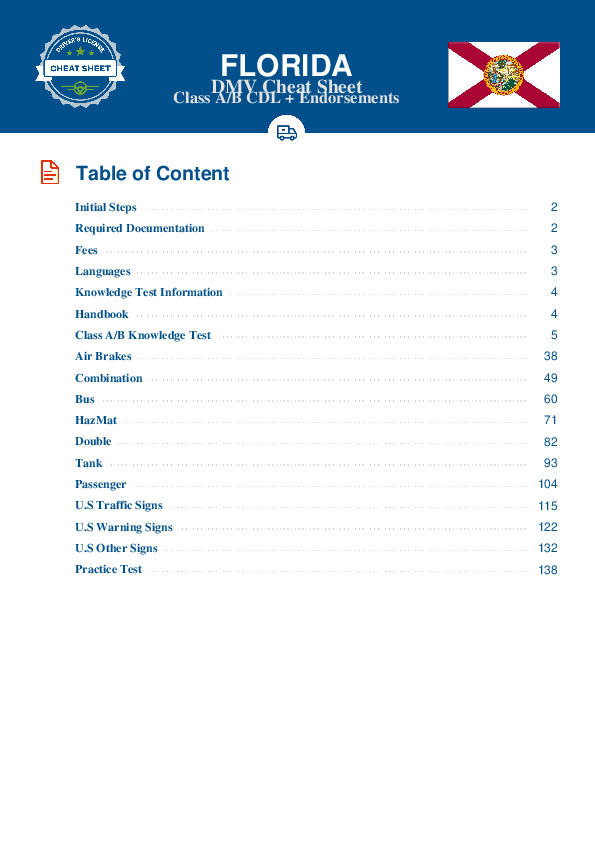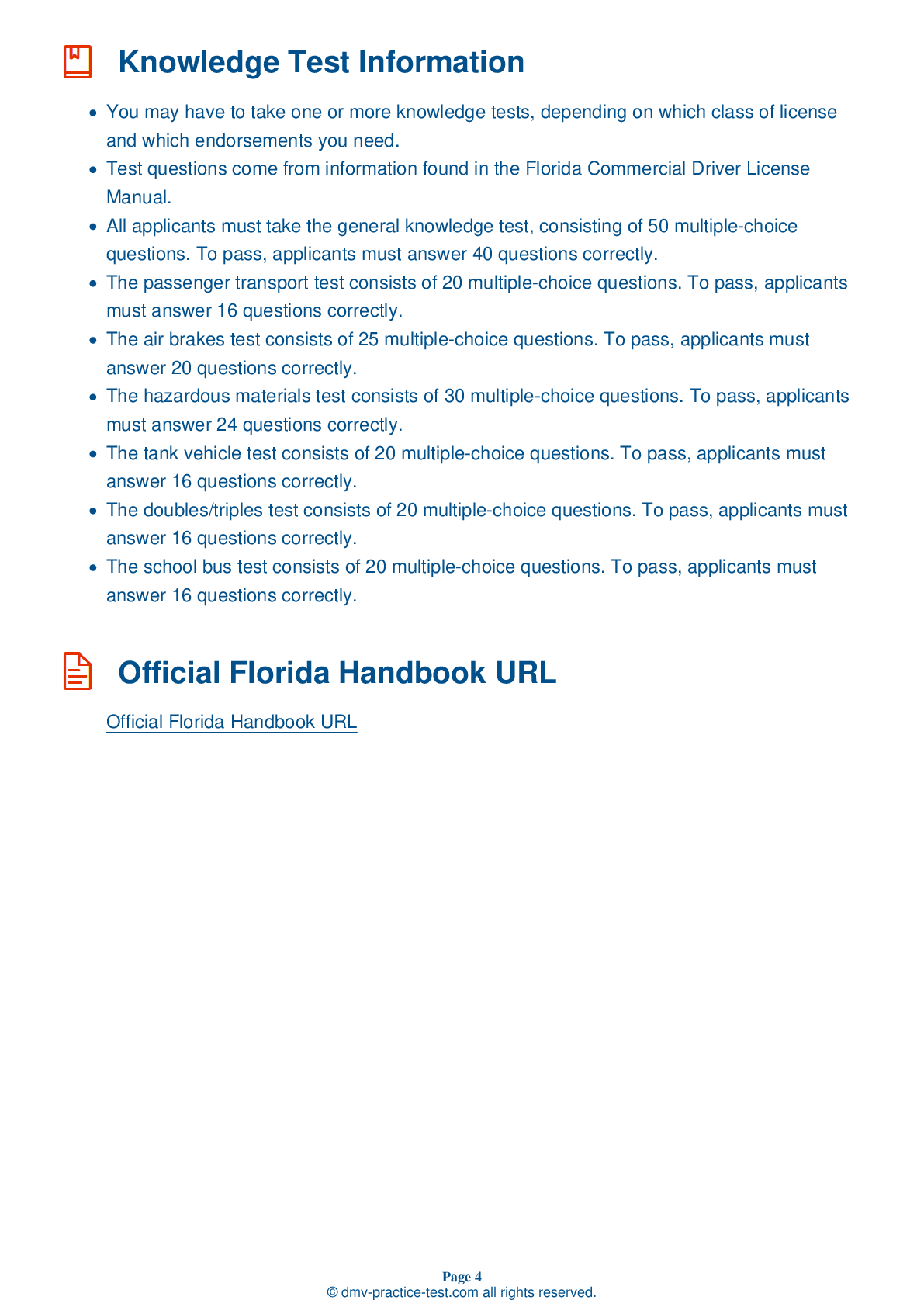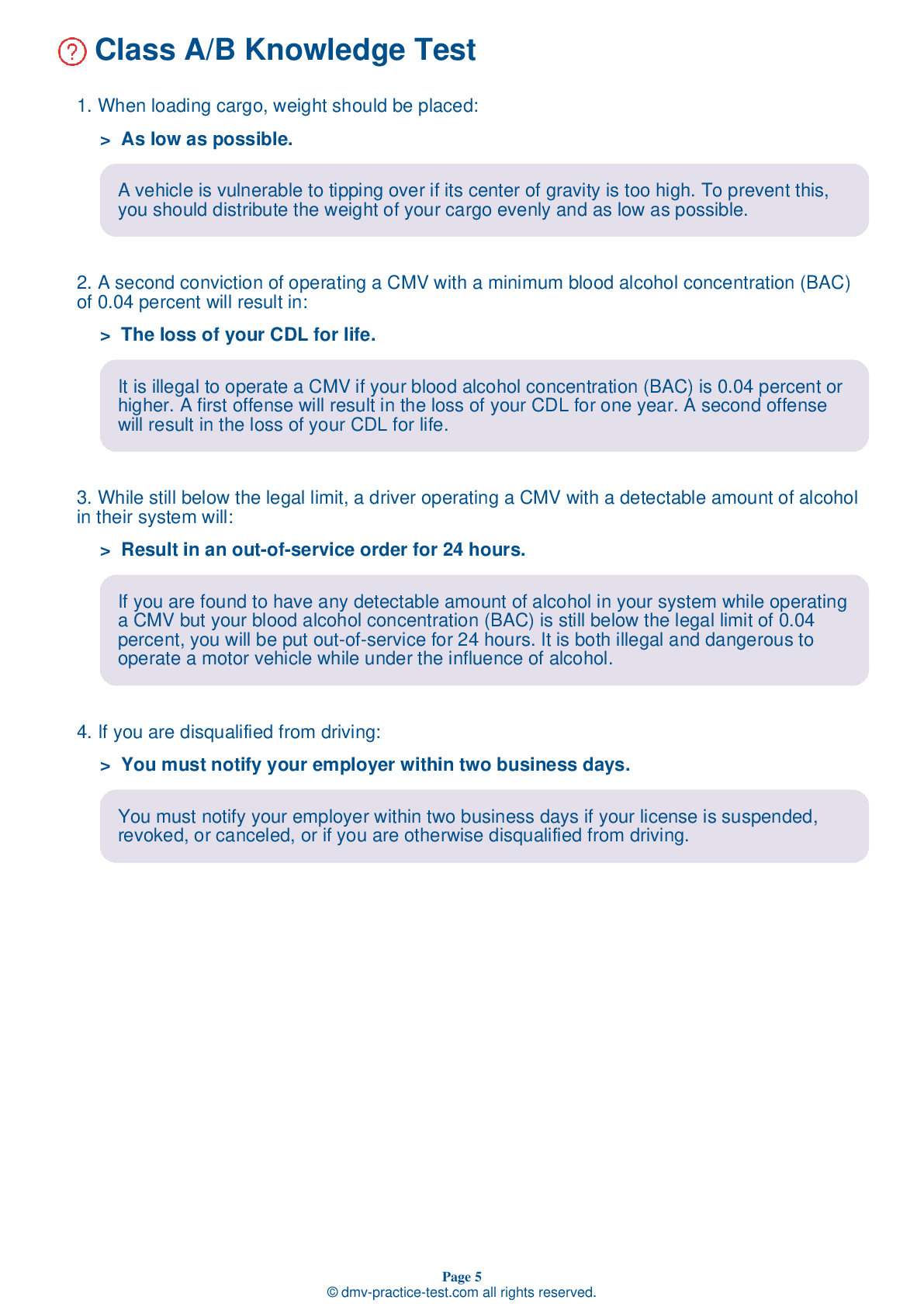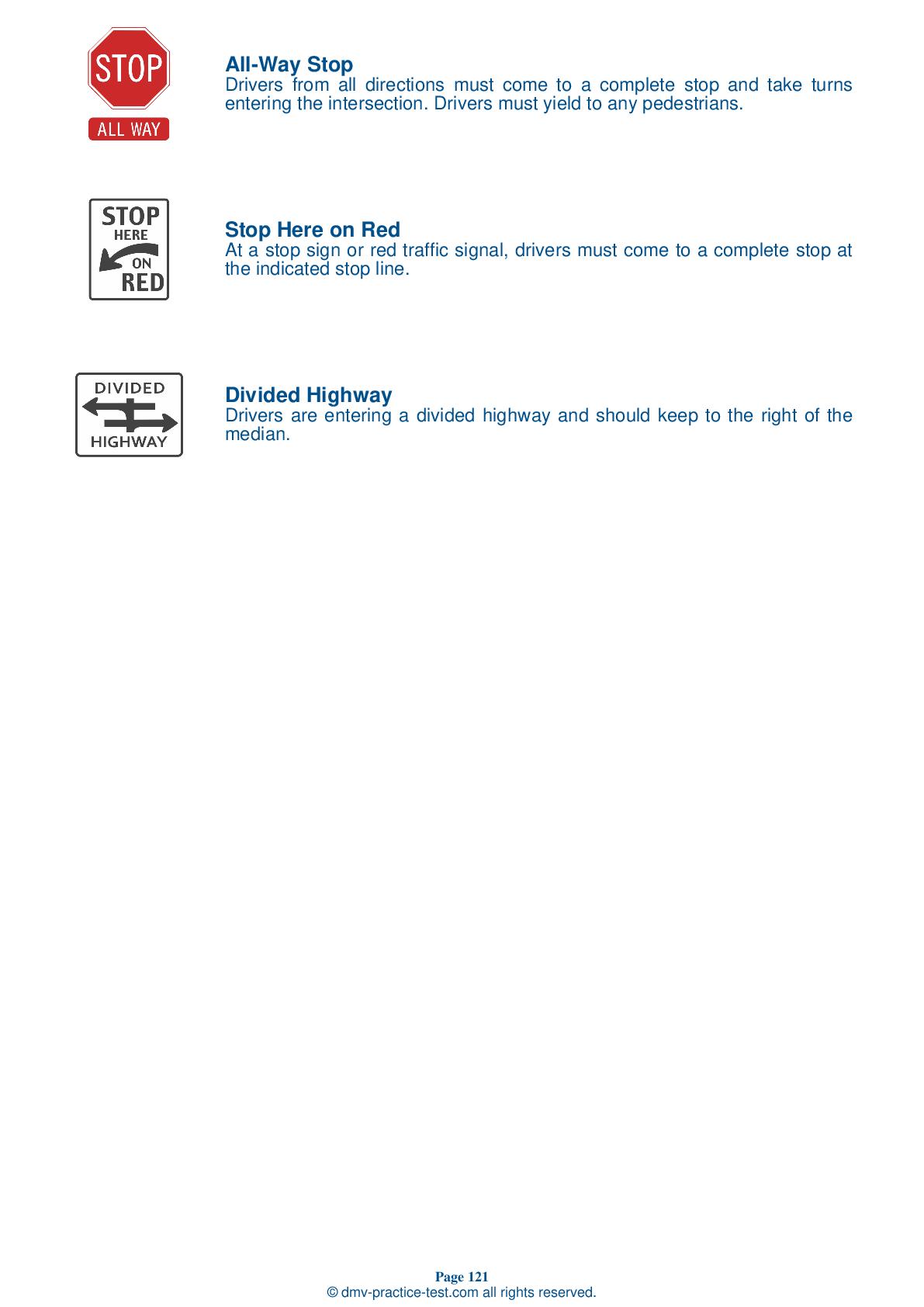Bus #1
Bus Driver Testing | Florida 2025 #1 Page 3 of 3
Train for FREE online with our FL bus CDL test. The official exam test consists of several obligatory parts, with all of them checking your knowledge of different blocks of road rules. If you need to obtain a license in Florida in 2025, learn how to become a bus driver and then practice as much as possible. Free sample tests published on our website will help you check and improve your knowledge and boost your grades. Please bear in mind that DMV requirements for a bus driver may vary from state to state.
20
16
20
15 . During exercises that are not the straight line backing exercise, you may exit your vehicle to check its position no more than:
Four times.
A driver is allowed to exit their vehicle to check its position during any basic control skills test exercise. This action is called a "look." During the straight line backing exercise, a driver may not exceed one look. During any other exercise, a driver may not exceed two looks.
16 . When taking the on-road test, you will be evaluated on regular traffic checks. You should not:
Check your mirrors regularly.
While taking the on-road driving skills test, check for traffic and use your mirrors regularly, especially when encountering intersections. Scan and check for pedestrians in areas where they may be present.
17 . During a basic vehicle control skills test, you may be asked to:
Sound your horn.
Maneuvers that may be included in the basic vehicle control skills test include straight line backing, offset back/right parking, offset back/left parking, driver side parallel parking, conventional parallel parking, and alley docking.
18 . Before operating a school bus, ____ should be checked.
The inside mirror
It is essential that school bus drivers check all of the bus's mirrors before operating the vehicle. You should always have a maximum viewing area that is consistent with Federal Motor Vehicle Safety Standards. If necessary, have the positioning of the mirrors adjusted.
19 . If a bus is equipped with outside convex mirrors, they will be located:
On top of the bus.
Outside convex mirrors on a school bus are located below the outside flat mirrors. They are used to see a wide view of traffic, clearance, and students around the bus.
20 . Properly adjusted mirrors on a school bus allow the driver to see ____ behind the bus.
Four bus lengths
Proper mirror adjustment is vital to the safe operation of a school bus. A bus's flat mirrors should be adjusted so the driver is able to see 200 feet, or four bus lengths, behind the bus.
2025 Florida | Frequently Asked Questions
To acquire a CDL Hazmat endorsement in Florida, you must already hold a valid CDL. Complete a HAZMAT endorsement application, pass a written test, and undergo a TSA background check. Once approved, you can add the Hazmat endorsement to your CDL. Make sure to renew it every five years or according to Florida's specific regulations.
To obtain a CDL Hazmat license, you must first have a Commercial Driver's License (CDL). You must also be at least 21 years old, a U.S. citizen or have legal status, and be able to read and speak English. Additionally, you need to pass the Hazmat knowledge test and undergo a Transportation Security Administration (TSA) background check.
When applying for a CDL Hazmat endorsement, you need to provide proof of U.S. citizenship or legal status, such as a passport or birth certificate. You also need your current CDL. Additionally, you must complete the Hazardous Materials Endorsement application form, and provide fingerprints for the TSA background check. Always check with local regulations for any additional requirements.
Yes, there is a dedicated written test for the CDL Hazmat endorsement. The Hazardous Materials Endorsement Knowledge Test assesses your understanding of the rules and regulations related to transporting hazardous materials. It covers topics like loading and unloading, bulk packaging marking, driving and parking rules, and emergency response procedures.
The written test for the CDL Hazmat endorsement covers a variety of topics related to handling hazardous materials. These include understanding hazard classifications, shipping papers, placarding rules, emergency response procedures, safe loading and unloading practices, and incident reporting requirements. It also tests knowledge of federal and state regulations for transporting hazardous materials.
Yes, acquiring a CDL Hazmat endorsement involves additional charges. The cost includes a fee for the endorsement application, a fingerprinting fee for the TSA security threat assessment, and a fee for the knowledge test. The exact amounts can vary by state, so it's best to check with your local DMV or equivalent agency for specific pricing.
Yes, obtaining a CDL Hazmat endorsement requires passing a Transportation Security Administration (TSA) background check. This involves fingerprinting and checking criminal, immigration, and terrorism records. The goal is to ensure the safety and security of hazardous material transportation. Applicants must also have no disqualifying criminal offenses.
Yes, specialized training is necessary for the CDL Hazmat endorsement. Applicants must pass a written knowledge test on handling hazardous materials. While not required, many choose to enroll in training programs to prepare. After passing the test, a background check by the TSA is also required before the Hazmat endorsement is granted.
No, you cannot legally transport hazardous materials without a valid CDL Hazmat endorsement in the United States. This endorsement ensures that drivers are qualified and understand the necessary safety protocols for handling hazardous materials. Violation of this law can lead to hefty fines and potential loss of commercial driving privileges.
You can add the Hazmat endorsement to your current CDL. You don't need to apply for a new CDL. However, you must pass the Hazmat knowledge test and a TSA background check. Once you've passed these, you can add the endorsement to your existing CDL by visiting your local Department of Motor Vehicles (DMV).



